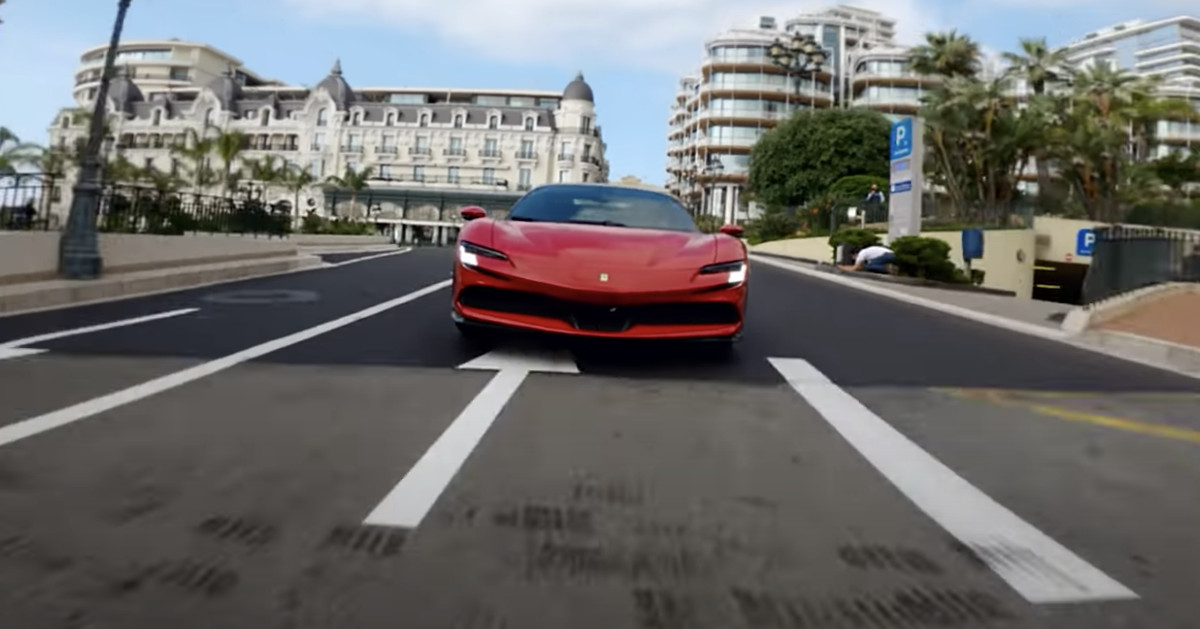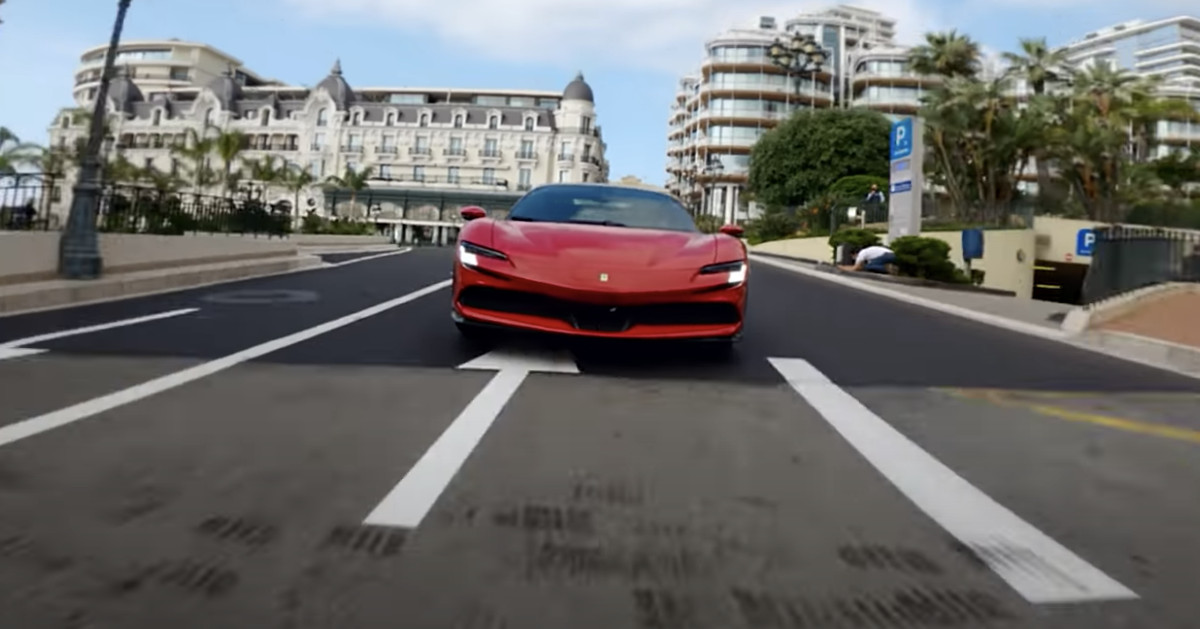
Ferrari has released a six minute video called Le Grand Rendez-Vous, a modern spin on C’était un Rendez-vous, the classic 1976 single-take short film that features a driver recklessly tearing through the dawn-lit streets of Paris. While there was zero chance Ferrari was going to recreate that rogue run through the City of Lights, the homage — which takes place in Monaco and features F1 star Charles Leclerc — is already being criticized for its soullessness. The thing that really kills it, though, is how smooth the footage is.
This may seem counterintuitive, as stabilized footage is typically a cinematic hallmark. And the original C’était un Rendez-vous was filmed by a gyroscopically stabilized camera mounted to the front of the Mercedes-Benz that was used to make the mad dash through Paris.
But the footage in Le Grand Rendez-Vous is too smooth. This is largely thanks to the digital image stabilization being performed by what appears to be a GoPro mounted to lip of the Ferrari SF90 Stradale featured in the video.
[embedded content]
Digital image stabilization is a great tool for masking small amounts of camera shake, or in a smartphone, counteracting an unsteady hand. But there’s a time and a place for shaky footage, like when you’re trying to convey the speed of a very fast car. (For instance, the production house that shot Bugatti’s record-breaking 250 mph run actually added some shake to its footage in post-production because the filmmakers felt it looked too “lifeless.”)
The smoothness of the Ferrari footage is also enhanced by the fact that it appears to have been filmed using GoPro’s ultra-wide “Superview” field of view setting, which — while enhancing the sense of speed — makes any shaking even harder to spot.
These are bad choices because they sap the footage of the small bumps and shakes that make the original film so hair-raising, and they’re especially frustrating because they could have been changed with just a few taps. (The decisions are even more puzzling in light of the fact that Ferrari had Claude Lelouch — the director of C’était un Rendez-vous — film Le Grand Rendez-Vous.) The only real saving grace are the omnipresent sounds of engine noise and tire squeal.
Just a few taps, and the footage would have been far more lively
The mechanical stabilizer used on the camera in C’était un Rendez-vous surely helped cut down on big wobbles and vibrations from the engine, but there was enough life left in the footage to convey the chaos of what was happening. That was aided by a narrower field of view, too, which is more prone to showing camera shake.
Ferrari isn’t the first automaker to film an homage to C’était un Rendez-vous that was met criticism. Ford released one a few years ago (shot in Paris, no less). The final video was heavily edited, though, which many felt broke the one-take spirit of the original. But Ford’s footage still has some of the life that Ferrari’s lacks.
There are certainly other things to critique about the video Ferrari released, like its general cheesiness, Prince Albert II’s awkward cameo, or just how overly planned it all feels. But those things would be more forgivable if the footage didn’t look so lifeless. Ferrari put an F1 driver in its new 1,000-horsepower hybrid hypercar, blocked off thousands of square feet of roads in Monaco, and turned him loose. The video the company ultimately released lacks pretty much all of the excitement of that premise.
